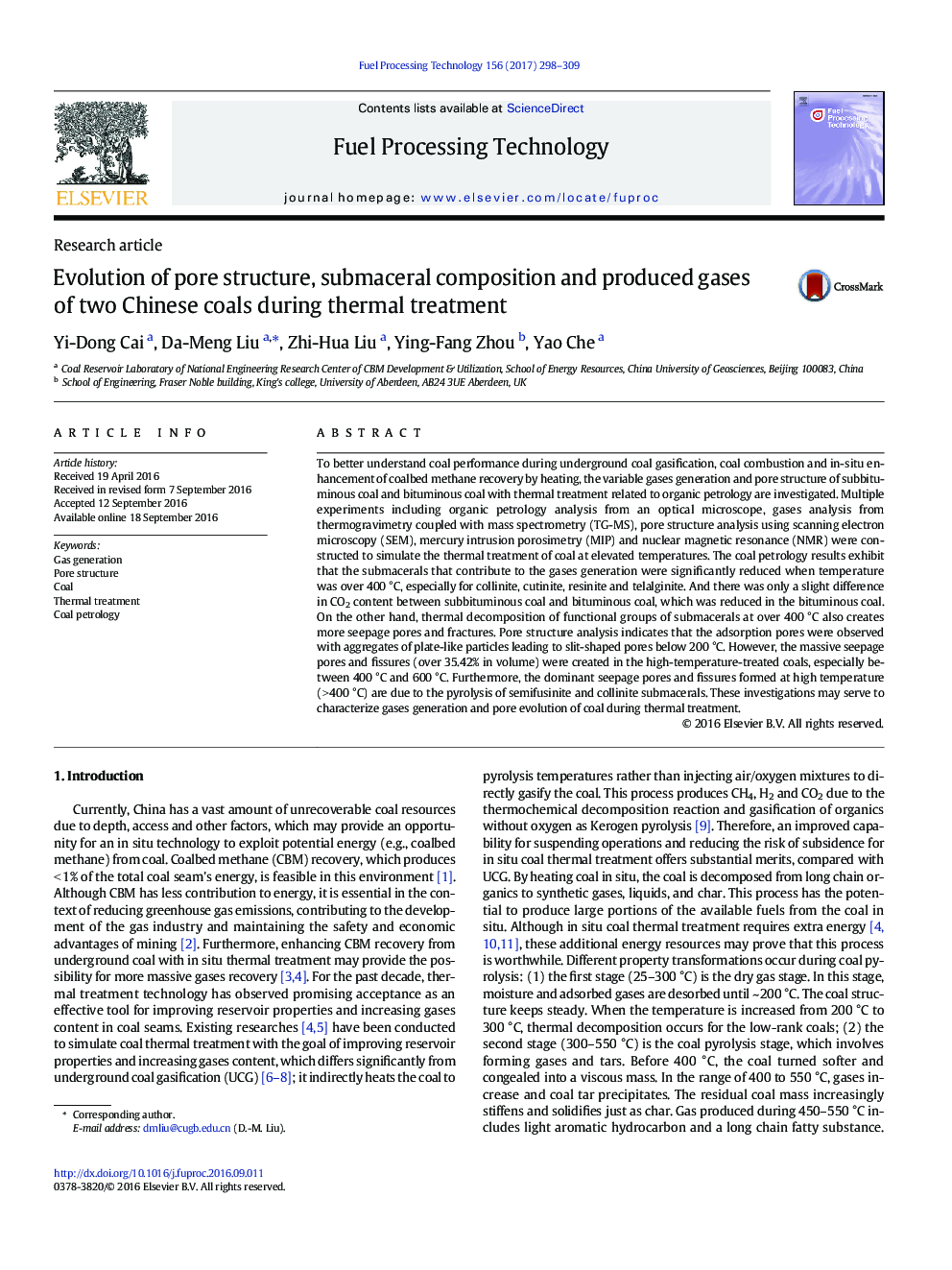| Article ID | Journal | Published Year | Pages | File Type |
|---|---|---|---|---|
| 6476655 | Fuel Processing Technology | 2017 | 12 Pages |
â¢Collinite, cutinite, resinite and telalginite contribute to massive gases release.â¢Unsound pore structure has an important impact on pore compressibility.â¢Heating is an effective way to improve the adsorption pores by NMR investigation.â¢Massive seepage pores and fissures originate in dominant semifusinite and collinite.â¢Enhanced CBM recovery from low rank coal by thermal treatment should be promising.
To better understand coal performance during underground coal gasification, coal combustion and in-situ enhancement of coalbed methane recovery by heating, the variable gases generation and pore structure of subbituminous coal and bituminous coal with thermal treatment related to organic petrology are investigated. Multiple experiments including organic petrology analysis from an optical microscope, gases analysis from thermogravimetry coupled with mass spectrometry (TG-MS), pore structure analysis using scanning electron microscopy (SEM), mercury intrusion porosimetry (MIP) and nuclear magnetic resonance (NMR) were constructed to simulate the thermal treatment of coal at elevated temperatures. The coal petrology results exhibit that the submacerals that contribute to the gases generation were significantly reduced when temperature was over 400 °C, especially for collinite, cutinite, resinite and telalginite. And there was only a slight difference in CO2 content between subbituminous coal and bituminous coal, which was reduced in the bituminous coal. On the other hand, thermal decomposition of functional groups of submacerals at over 400 °C also creates more seepage pores and fractures. Pore structure analysis indicates that the adsorption pores were observed with aggregates of plate-like particles leading to slit-shaped pores below 200 °C. However, the massive seepage pores and fissures (over 35.42% in volume) were created in the high-temperature-treated coals, especially between 400 °C and 600 °C. Furthermore, the dominant seepage pores and fissures formed at high temperature (> 400 °C) are due to the pyrolysis of semifusinite and collinite submacerals. These investigations may serve to characterize gases generation and pore evolution of coal during thermal treatment.
Graphical abstractDownload high-res image (145KB)Download full-size image
